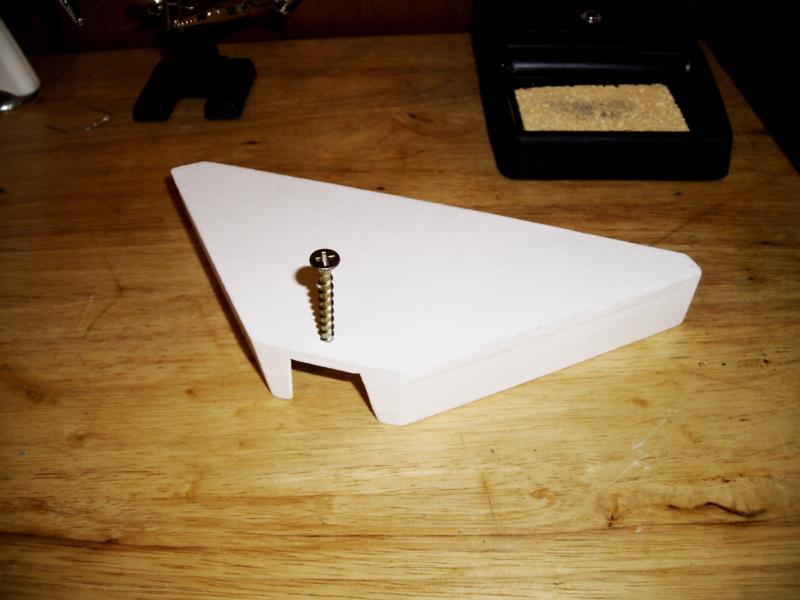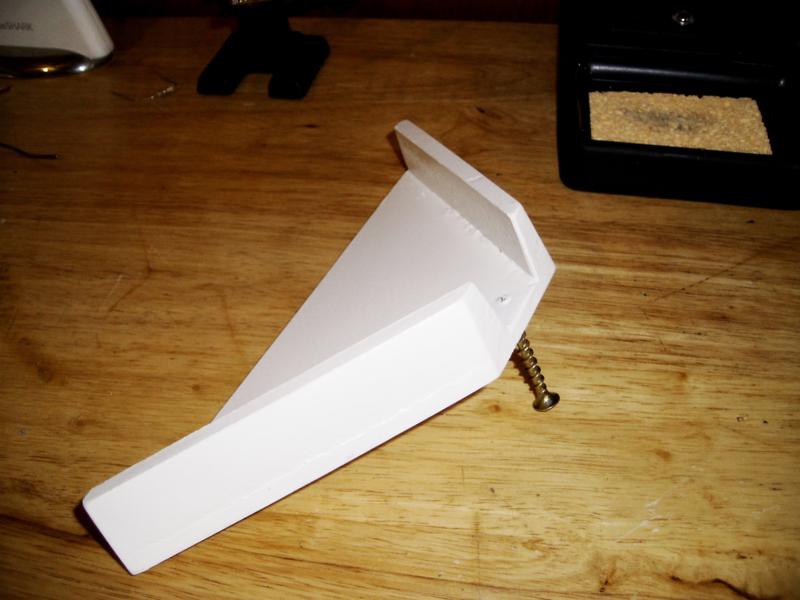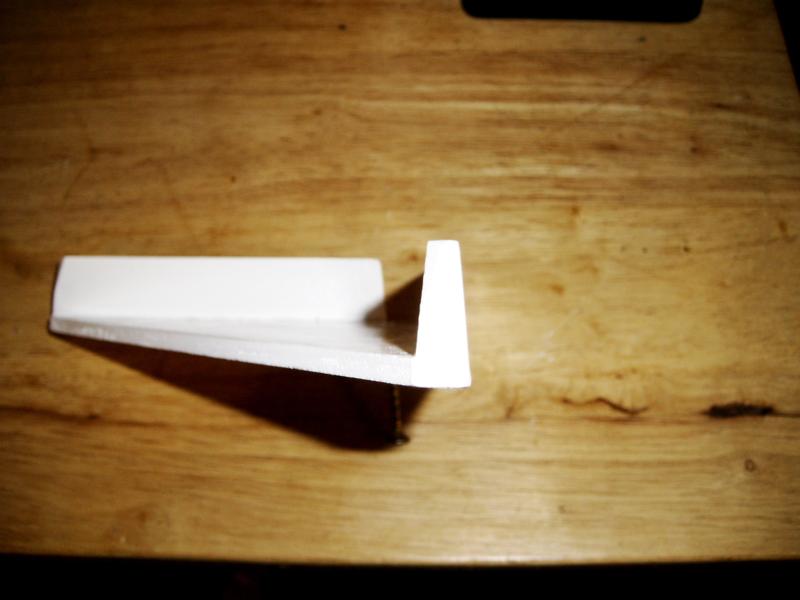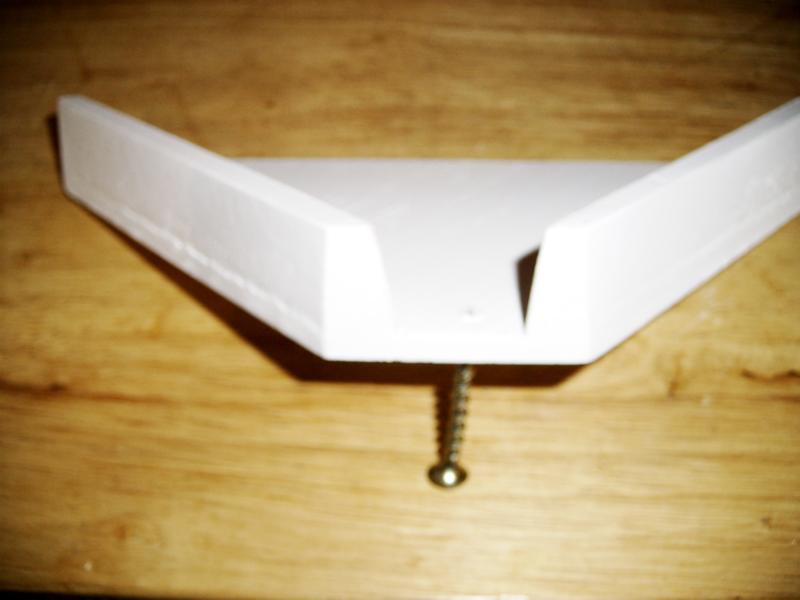While
the lost foam casting was usable (with plenty of machining), I wanted
something a little lighter and with better dimensional stability.
Hopefully, this will just require light machining to make the sides
square and true.
I made a quick pattern using thin plywood and
MDF, cutting with the table saw and gluing with Elmers white glue.
Click a photo for a larger view.
   
The
plywood is 3/16 (.187) inch thick. The MDF was 3/4 (.75) inch thick, so
the total height is just under an inch, plus a few coats of rattle can
paint. The MDF is tapered about 5 degrees per side. The wood screw
is a handle to pull it from the sand. The triangle of plywood started
out at 6 inches on a side, but the trimmed pattern is more like 5 1/2".
|